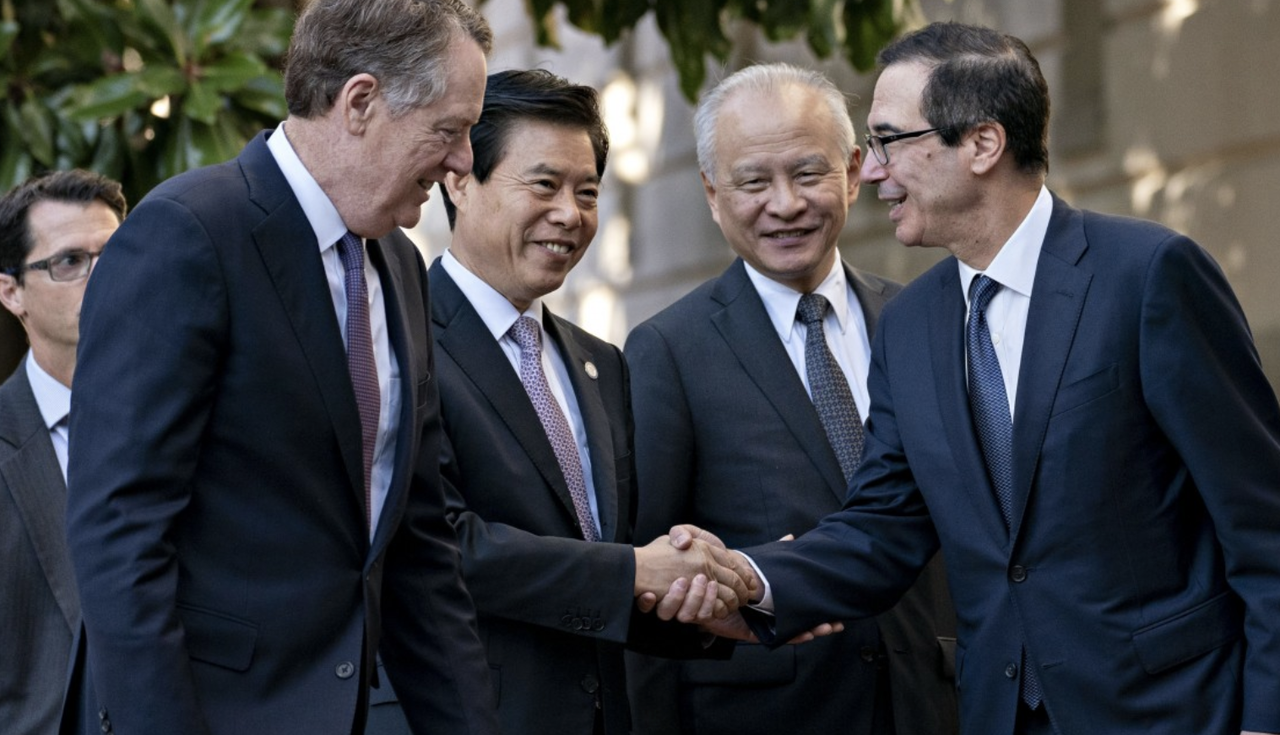Beijing Plans $4 Billion Asset Sale To Punch Yuan Shorts In The Nose
It’s almost like the market is treating a Bloomberg report claiming senior Chinese officials harbor serious doubts about the feasibility of a trade deal as if the report wasn’t credible – something we suggested yesterday when we speculated that the report could be a plant to push the Fed toward more rate cuts.
Already, markets are shaking off Thursday’s modest losses as futures trade higher on a batch of strong Chinese economic data overnight, and now, the SCMP has followed that up with some trade news that reads as if yesterday’s negative reports never happened. According to the SCMP, Beijing is already taking steps to hold up its end of the “Phase One” bargain – that is, stabilize the yuan after a long slide – by preparing to sell some $4 billion in assets in Hong Kong.
Selling a huge pile of short-term securities will drive up short-term borrowing rates and make it more expensive for speculators to short offshore yuan.
That auction won’t take place until next week, per the SCMP.
The latest move, announced on Friday by the People’s Bank of China (PBOC), will see a total of 30 billion yuan (US$4.3 billion) in yuan-denominated securities sold in Hong Kong next week.
This a widely used method to push up investors’ borrowing costs, making it more expensive for speculators to bet that the yuan will fall.
The auction on Thursday will include 20 billion yuan (US$2.8 billion) of three month securities and 10 billion yuan (US$1.4 of one-year securities.
The report dropped just ahead of a planned Friday phone call between the US and Chinese trade delegations. The call was scheduled to plan a new location for the next round of trade talks, where “Phase One” is supposed to be finalized.
The announcement came just ahead of a planned phone call between the top US and Chinese trade negotiators later on Friday to continue efforts to finalise the details of the interim trade pact. Among other things, the two sides are likely to discuss a new venue for the signing of the deal after the sudden cancellation of the Asia-Pacific Economic Cooperation meeting in Chile disrupted the previous arrangement for Chinese President Xi Jinping and his US counterpart Donald Trump to meet on November 17.
According to SCMP, Beijing’s recent steps to stabilize the yuan suggest that a deal is possible, and that the leadership are taking it seriously. After all, it would improve the chances of the US removing its currency manipulator designation from China, something the Treasury imposed over the summer after the yuan broke below 7 to the dollar.
But as one economist pointed out, it would be hard for Beijing to move the yuan too far thanks to a capital-outlow pressure.
Zhou Hao, a senior economist at Commerzbank in Singapore, said market sentiment on the yuan had improved, resulting in a repositioning of its outlook.
“The fear of a rapid yuan depreciation is gone,” he said. “Instead, there is a likelihood that the yuan will strengthen towards 7 once a deal is announced.”
Beijing may repledge to avoid a competitive devaluation and market intervention, but it would be hard to push up the exchange rate significantly owing to continuing Chinese capital outflow pressure, Zhou added.
“An annual two-way fluctuation of 3 to 5 per cent could be acceptable [to Chinese authorities]”, he predicted.
The yuan rose 1.5% vs. the greenback in October, but it’s still down 2.3% so far this year.
After being labeled a currency manipulator by the Treasury, PBOC Governor Yi Gang told the IMF in Washington last month that the yuan exchange rate remained stable, and that there is growing market acceptance of two-way exchange rate fluctuations.
“Judging both from economic fundamentals and from market supply and demand, the [yuan] exchange rate is at an appropriate level,” he said.
We suspect we’ll be seeing more negative reports about the trade negotiations, even if they’re swiftly followed with positive reports like this on, now that the Fed is trying to end its rate cut program. Perhaps President Trump believes that sabotaging his own trade deal is now his best bet for convincing the Fed to bring rates back to zero?
Tyler Durden
Fri, 11/01/2019 – 06:33
via ZeroHedge News https://ift.tt/2N4YiwW Tyler Durden
